Visiting Rosenborg Castle, also known as Rosenborg Slot, is the best of the royal residences I think within the city of Copenhagen. Amelienborg Palace, which is a current residence of the royal family, is a smaller museum that has more recent examples of history, while Christiansborg Palace is mainly a draw for the Royal Reception rooms (which were closed during my visit so always check). Rosenborg Castle on the other hand offers 400 years of history particularly artifacts and stories from one of Denmark’s most colorful kings, Christian IV.

The way the self guided tour works is that you start going through the main castle first and all of its 3 floors, and then exit the castle and go around to another entrance to the basement which is where you’ll find the treasury, including the crown jewels. Here are a few of my favorite highlights from visiting Rosenborg Castle.
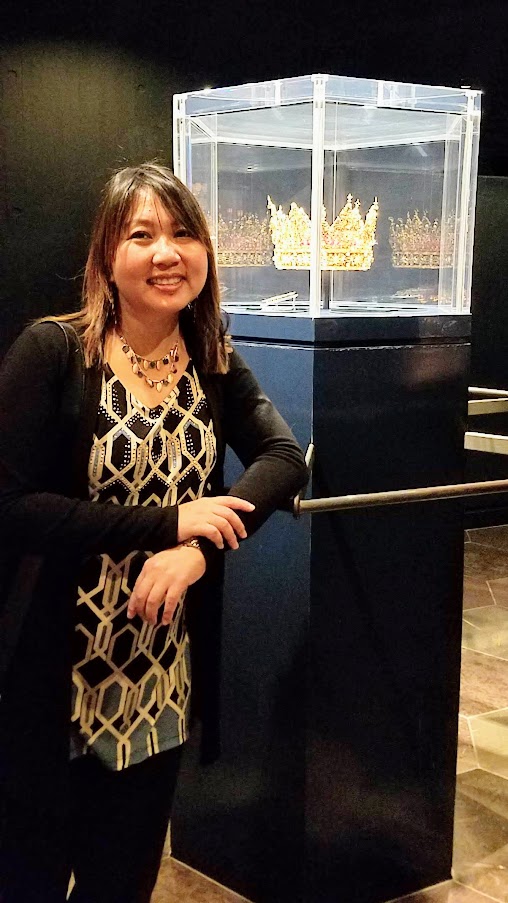
One thing you should do is purchase your ticket online – the tickets are allocated with an entry time, so to save time waiting in line and make sure you get the time you want, purchase it beforehand from the website. Then, when it approaches your time you can just go to the door to enter the castle and scan your ticket from your phone. I took the metro train here and the closest station will be Nørreport Station, and from there this is the entrance you will see.
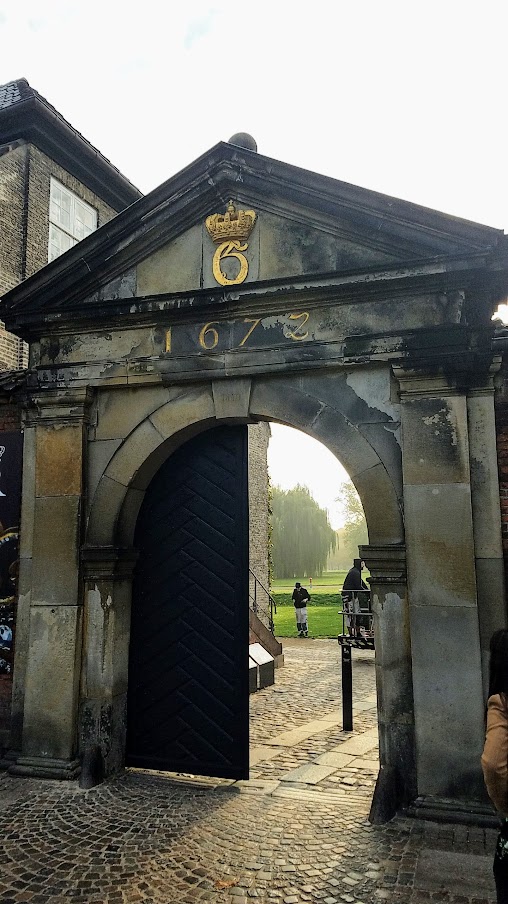
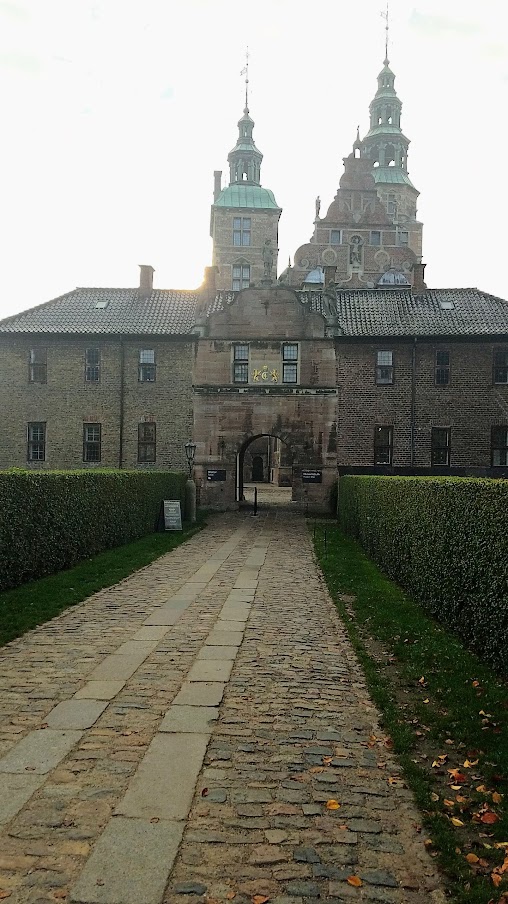

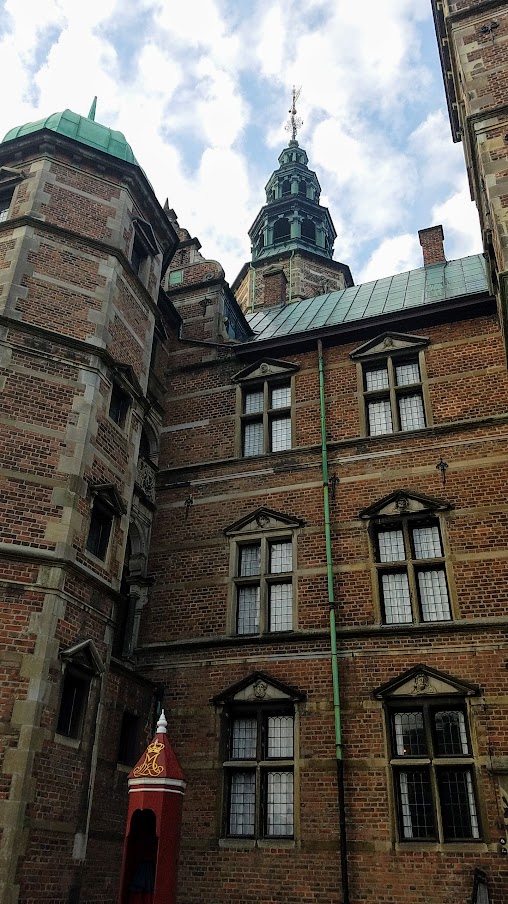
If you approach from the opposite side where you walk through Kongens Have, aka the park on the other side of the castle, you will have to cross a small bridge over the moat to get to the castle.

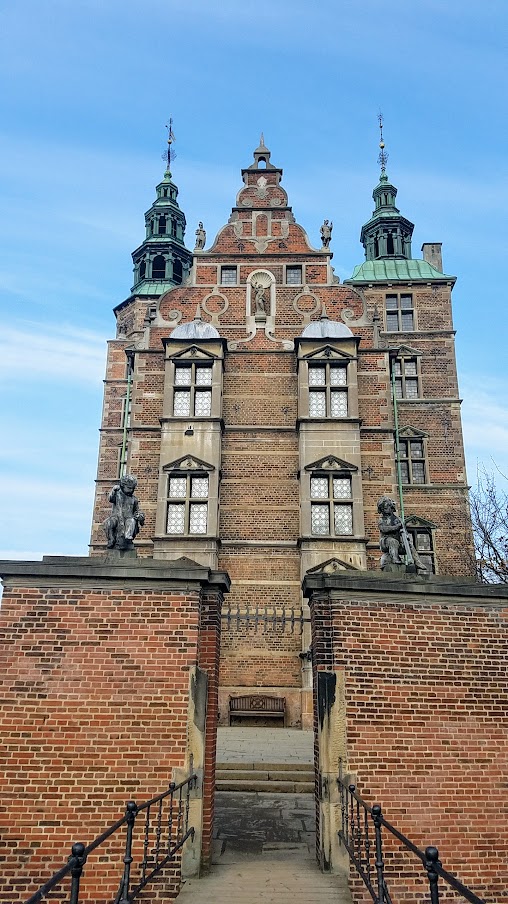
Make sure you log onto their free wireless so you as you visit room by room (the rooms are numbered) you can follow along not just on the printed map for the name of the room, but on their website where you can look up a description of the room or any artifact from any room on any floor from the museum website. I though this was a clever way to label objects with small number signs instead of huge signs everywhere that also could interfere of the grand feeling of the room.
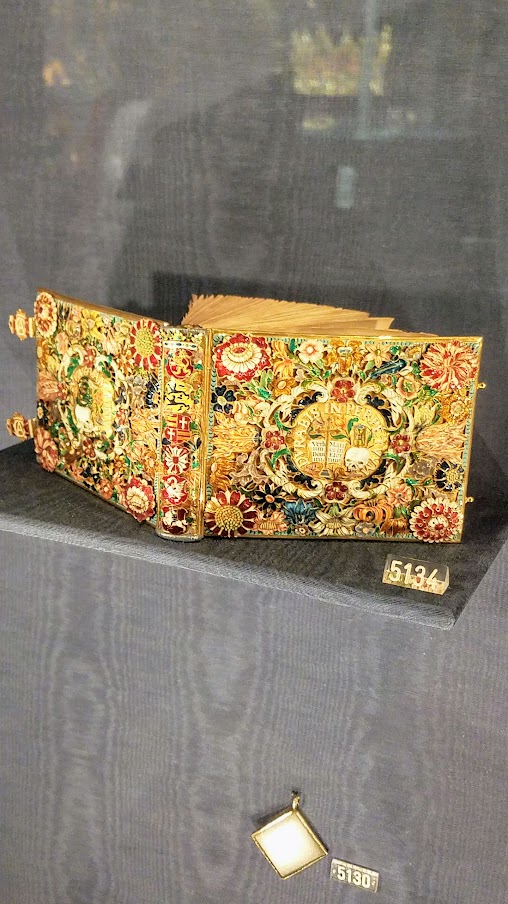

5134: Prayerbook written by Christian IV and Kirsten Munk’s daughter, Anne Cathrine, in the year of her death 1633 // 5272: Eight silver boxes with monogram and year, containing the umbilical cords of Frederik III’s children, believed to provide protection against disease and death. In the silver box is Frederik III’s unbroken fetal membrane, or caul, thought to bring him luck.
So you will start your self-guided tour with Christian IV’s Winter Room, one of the rooms he had for receiving visitors. It’s hard to miss the prominent bust of Christian IV here. Some interesting trivia in here include that if you look carefully at the tile you can see some are removable to act as audio channels in the floor so guests could hear music from musicians in the basement, but these tiles would be hidden using furniture so guests would wouldn’t see the musicians.
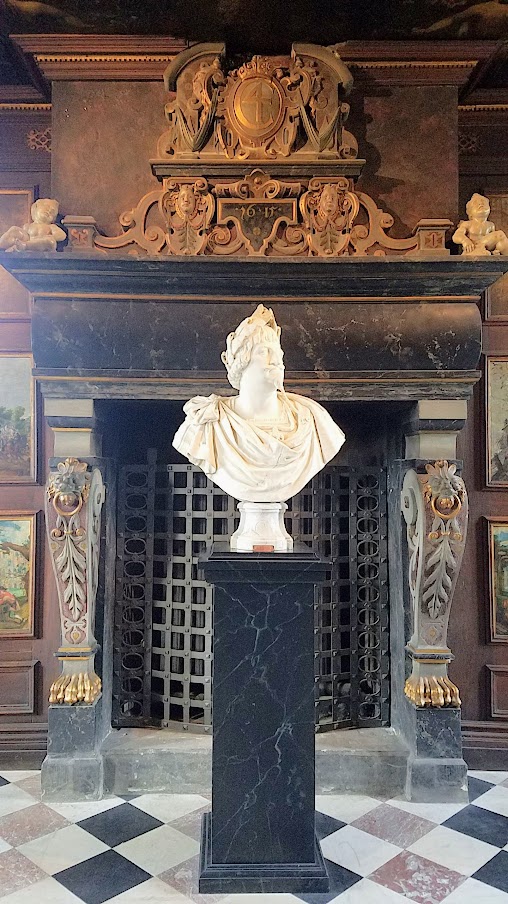
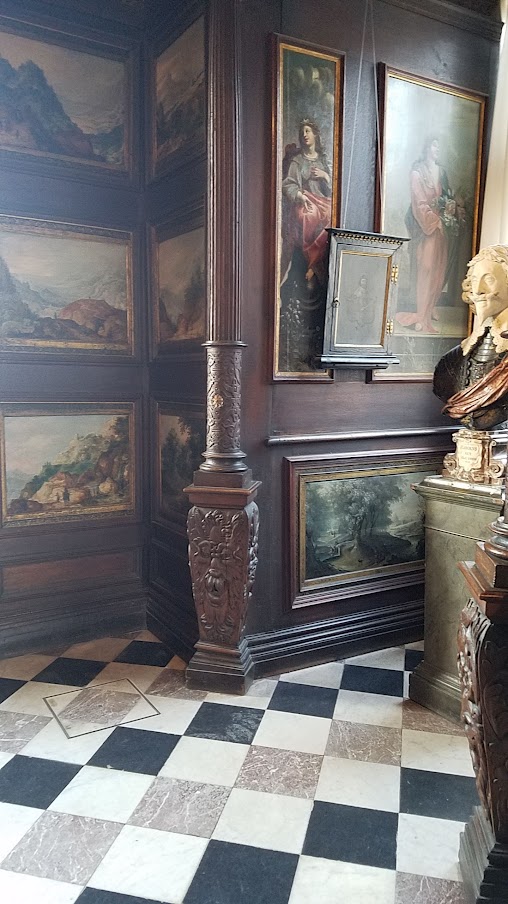
Amongst basically every wall spot covered with Dutch paintings, don’t miss the camouflaged peephole on the door wall (located by the kneeling figure on the right) for the king to look in on his guests from his bedroom next door, or for the king to signal servants to start the music.
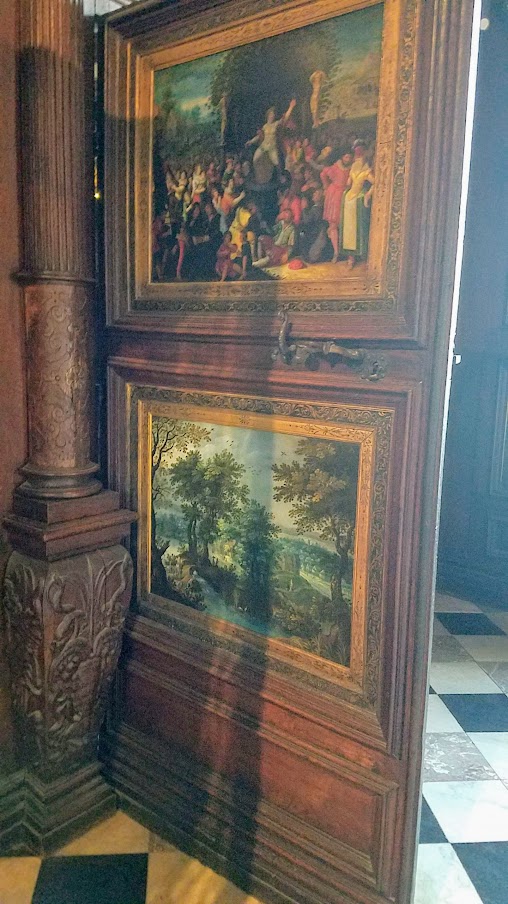
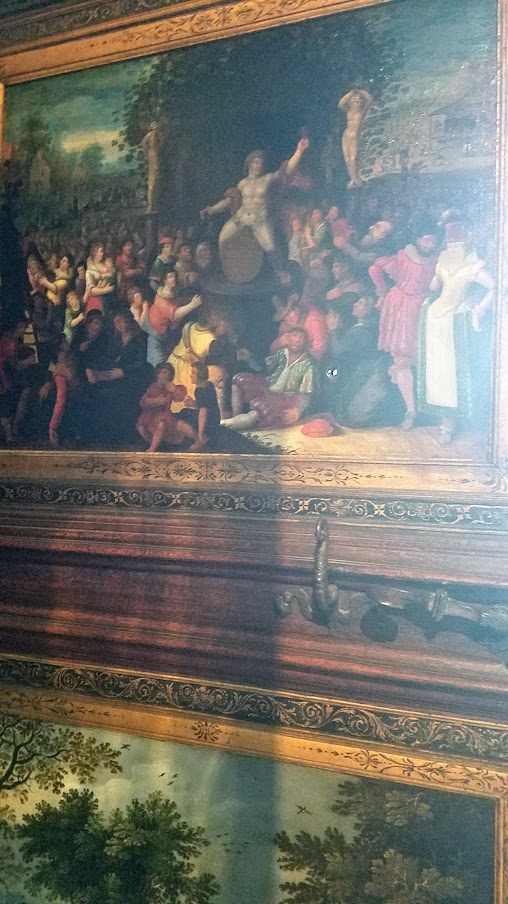
In the small room labeled 2 just off this room is the small and thus easy to heat Christian IV’s Writing Room. This room is preserved more or less intact, including the ornate ebony and bronze writing table dating from 1580. Per the castle’s website, the drawers are reliefs of gilt bronze depicting the 12 Labours of Hercules and the 12 patriarchs while the sides are engraved with Virgilius Solis’s biblical illustrations from 1560 and on the top engravings from Solis’s illustrations to Ovids Metamorphosis, 1563. The four lion feet have moveable jaws and eyes, which makes me wonder… why? The painting you see behind it is a portrait of Christian IV – other paintings in the room were paintings of his mother and also himself as a young boy.

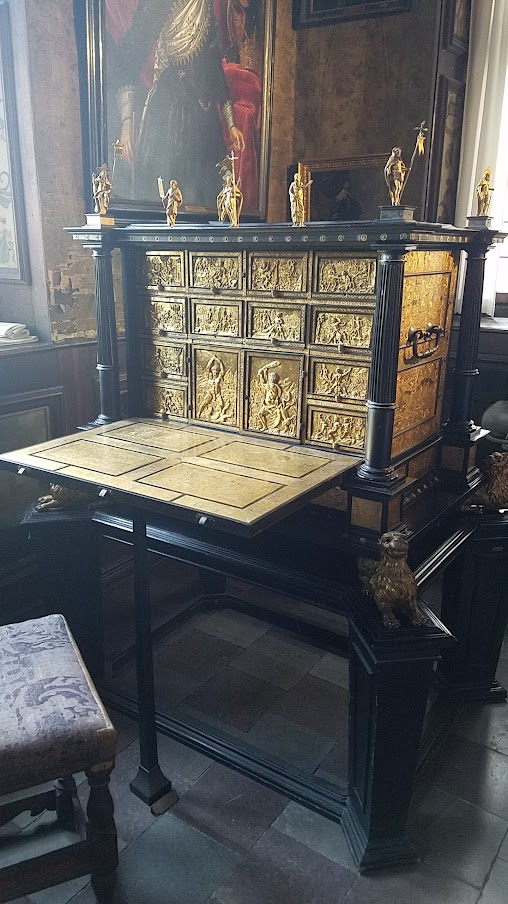
In the Christian IV bedroom next, you will find showing the king as an old man and as a dead man as he died in this room at the age of 70 with 2 wives, 3 mistresses, and 25 children. In the case you see are the clothes he wore during a naval battle against Sweden when a cannon exploded on the deck riddled him with shrapnel. The 67 year old king kept going – this feat is commemorated in Denmark’s national anthem – and when he removed the shrapnel from his eye and forehead he made some of the sharpnel into earrings for his mistress (you can see the earrings a bit to the right of the case). I can only assume this children’s group on the floor is enjoying this story from their teacher as I saw her with a cannon in her hand and talking while gesturing to the blood stained clothes. I wonder if they also stopped to look at his private bathroom also connected here, tiled with Delft porcelain, and which empties out to the moat… this “room” was also known as “The Secret”.
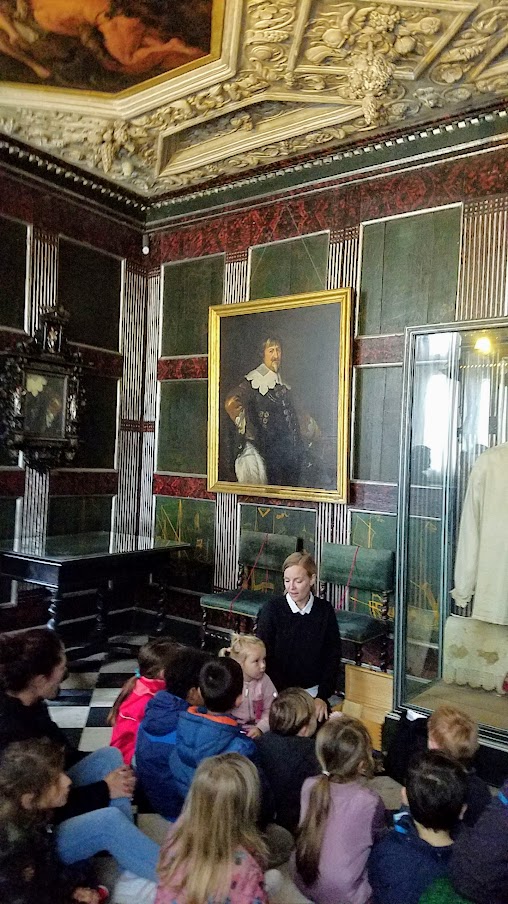
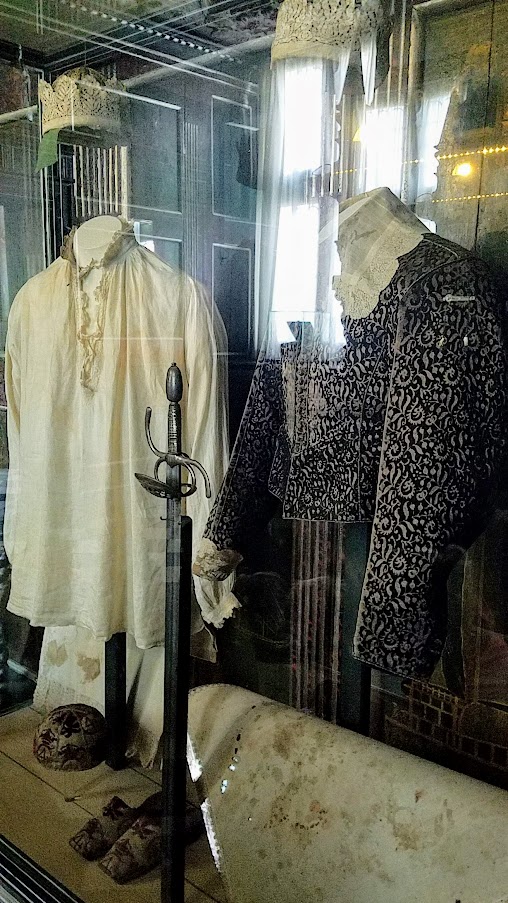

In the next room, known as the Dark Room because it has very little light inside after a tower was built. Also weird, this Trouser Watering chair which apparently is the forerunner of the whoopee cushion – it has securing devices to hold down the person sitting concealed in the armrests, and per the museum notes, “The strapped person could then be soaked by water running from vessels in the back of the chair through pipes in the seat. When the victim was released and stood up from the chair, a trumpet hidden in the seat would toot.” There were also creepy looking wax casts of people which I walked quickly by.
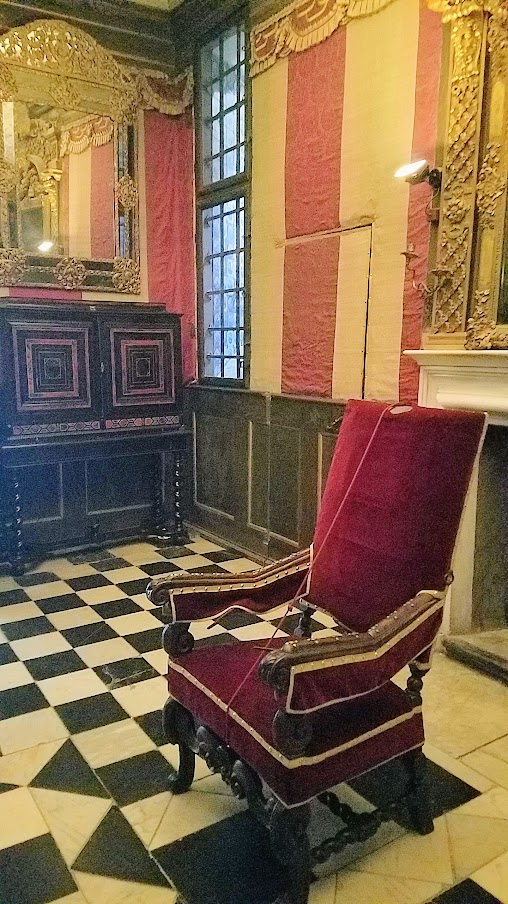

Fortunately, the next room was one of the most beautiful rooms to help wash my memories of that weird room and the macabre bedroom with blood stained clothes. This is the Marble Room – the ceiling paintings also show small, chubby, angelic child figures, carrying the Regalia and in the heart-shaped areas surrounding the paintings you can see parts of the Danish coat-of-arms and on the wall are the emblems of Norway, Denmark, and Sweden.
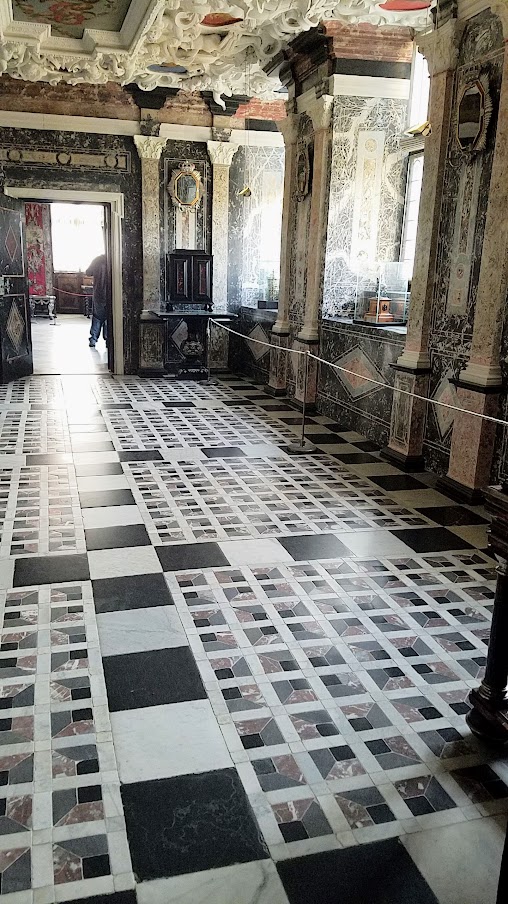
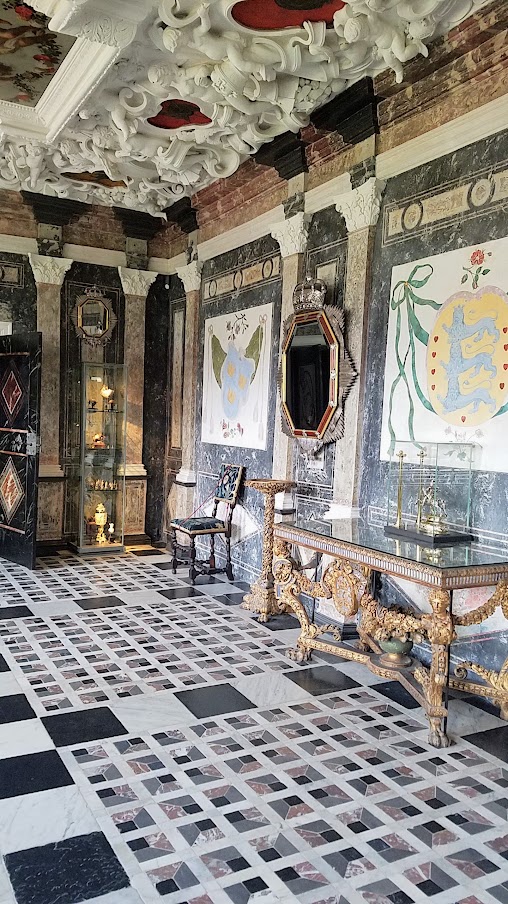




Next, in Christian V’s Hall, also known as the King’s Chamber, supposedly used by the king’s mistress, the ceiling has an orchestra playing looking down in the room occupants.


After a few hallways and a stairway, my next room that I liked was the one called Frederik IV’s Hall that included this cabinet decorated with water-colours of biblical scenes copied from pictures by Raphael, it has a clock at the top, and at the bottom, a built in keyboard for a spinettino. We couldn’t touch it, but the castle website had a page on just the cabinet that includes a video of them opening it up and it’s pretty cool inside. A cabinet on the other side is decorated with lacquer and with mosaics of semiprecious stones.
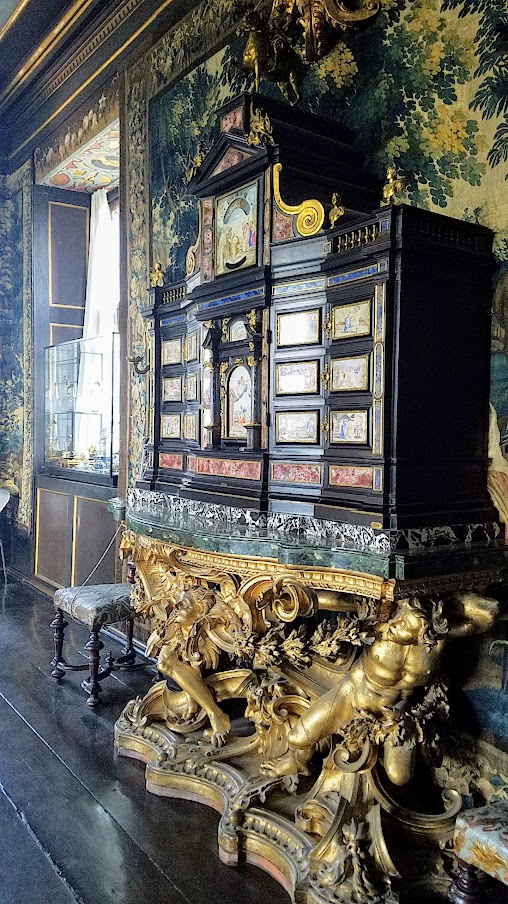
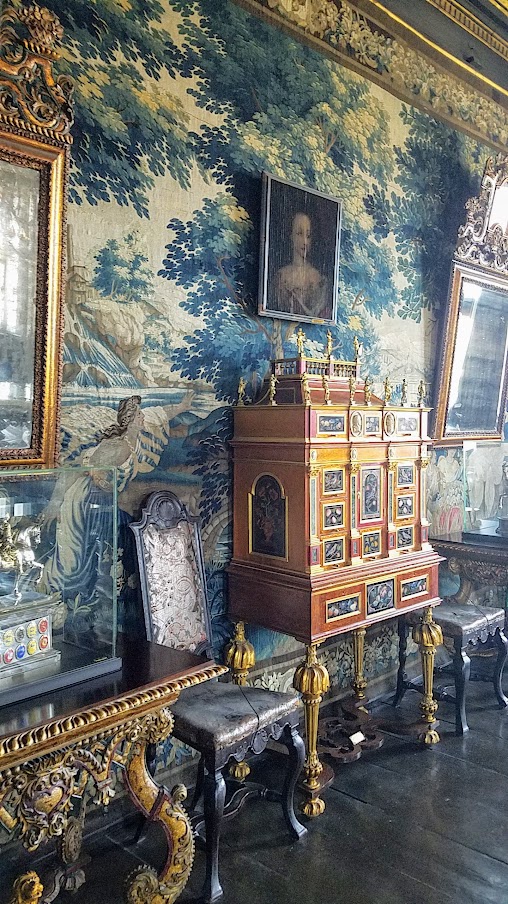
Meanwhile room #12 Christian VI’s Room is ornately decorated with tapestries depicting scenes from the life of Alexander the Great.

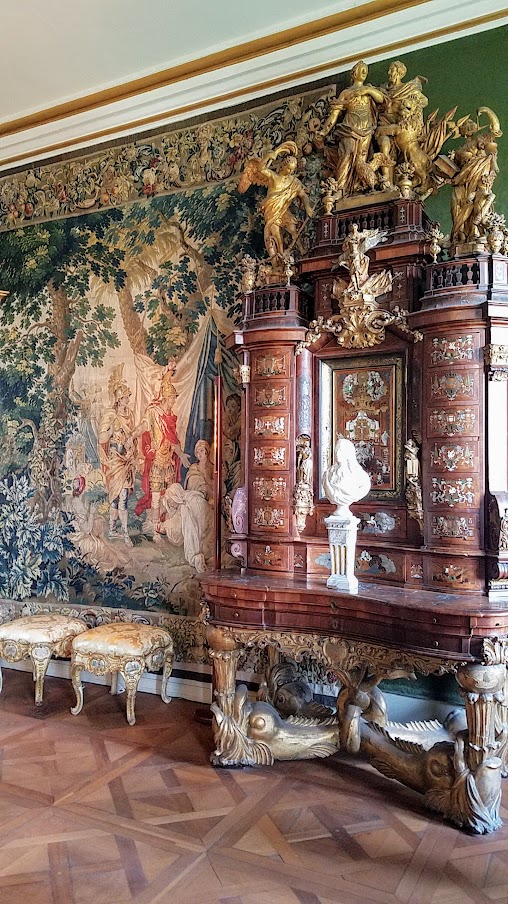
The Mirror Cabinet room was furnished for Christian V, and is a room mirrors were everywhere, on the ceiling, the walls and in the oval mirror in the flooring probably intentionally as a way to look up the skirts of female visitors. In hidden cupboards the king has both a fold out bed or an escape staircase.
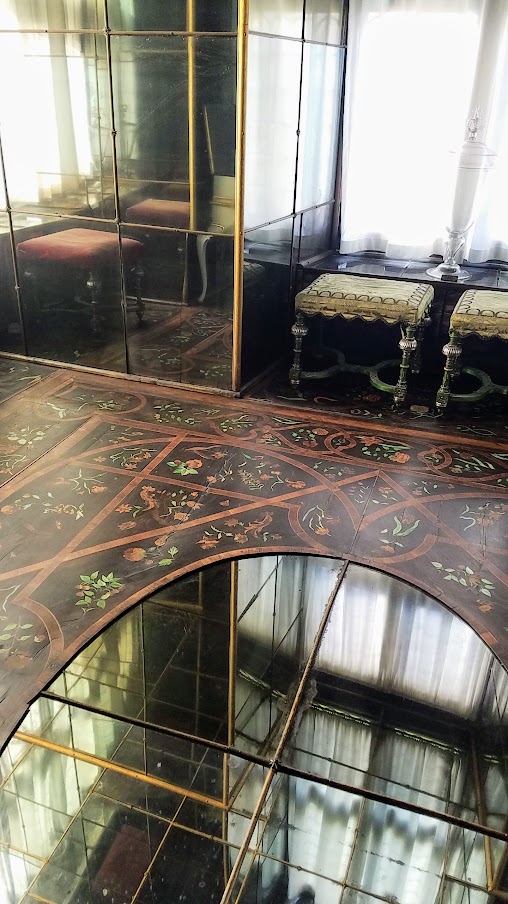
A few more rooms later, you’ll be up on the third floor (even though the map calls it second floor – it calls the first floor ground floor, and the next floor first floor) and is where you’ll find the impressive Throne Room, also known as the Long Hall or Knights’ Hall. It was intended as a ballroom, and here you will find the coronation thrones for the king and queen and three life-size silver lions standing guard. On the other side of the room is displayed the throne for audience. In this room I caught back up with the kids group who were lying down getting a lesson on the ceiling, so cute!
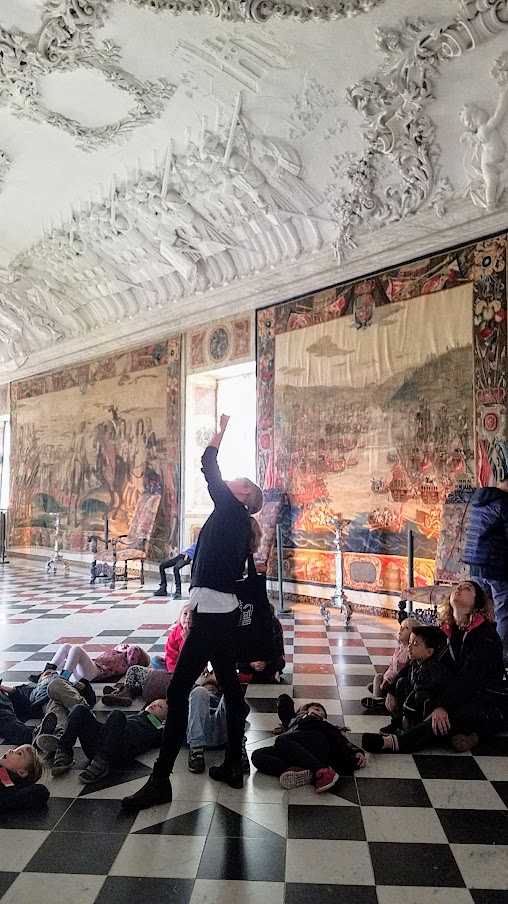
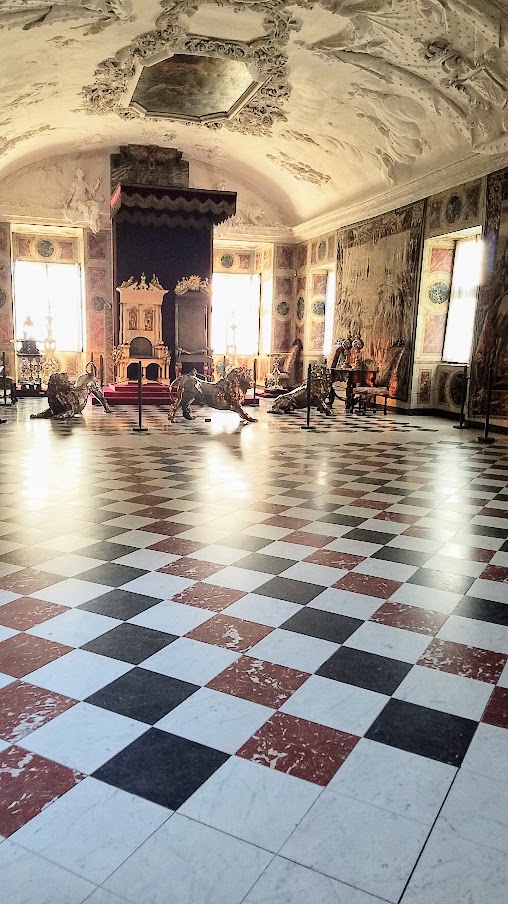


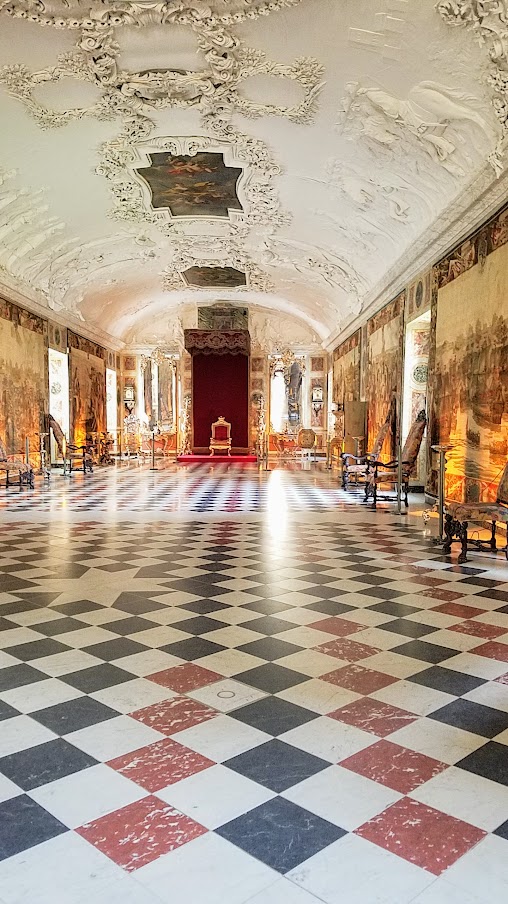

A few rooms that branch from this Throne Room highlighted collections of glass, bronze, or in one room so much porcelain in various sets! Porcelain was considered “White Gold” – just getting it back to Europe made it precious. The first photo you see if from a set called Flora Danica that show herbs and vegetables of the realm.


Now to the most precious: the displays in the Treasury in the basement. After some rooms displaying ceremonial weapons, ivory and amber objects, the Rosenborg wine (some wine from the 1580s – and there’s enough to enjoy at the current Queen’s New Year banquet for another 300 years!), you come to the three rooms of the Treasury. The first room displays Christian III’s State Sword used at coronations until 1648 and a scabbard of gold with enamel and table-cut diamonds. During the coronation, the crowned king would cut crosses in the air in all four directions with this two handed sword, underscoring his vow to defend the realm from all attacks. It’s since been replaced by the anointing sword.
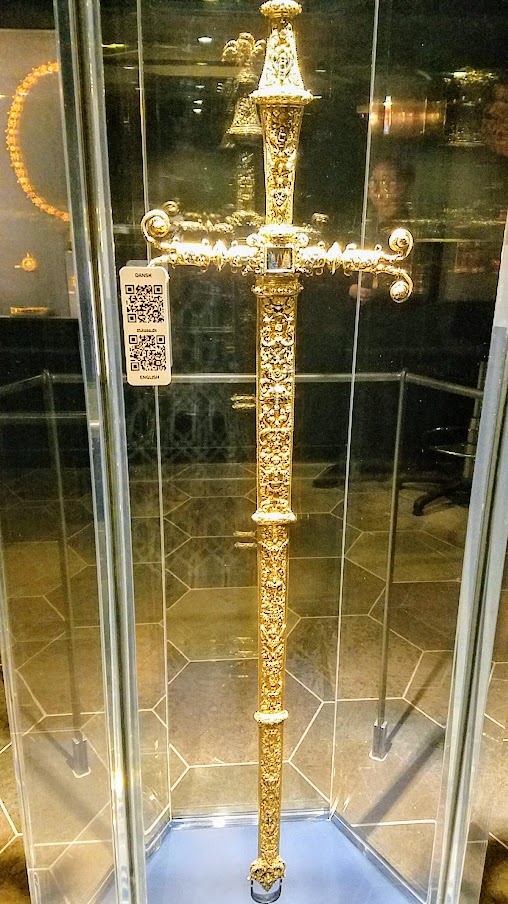

And for yet another dick king story… on display amongst all the gold things the king uses here is the The Oldenborg Horn. Per the castle website, “Legend has it that in the year 989, the first member of the House of Oldenborg, Count Otto, while out hunting met a young maiden, who handed him a drinking horn and bade him drink his fill. He sensibly threw away the contents and kept the horn.”

In the second room of the treasury, the highlight is Christian IV’s Crown, a crown of gold with enamel, table-cut stones and pearls for a total weight 2895 grams, aka it weights more then 6 pounds.
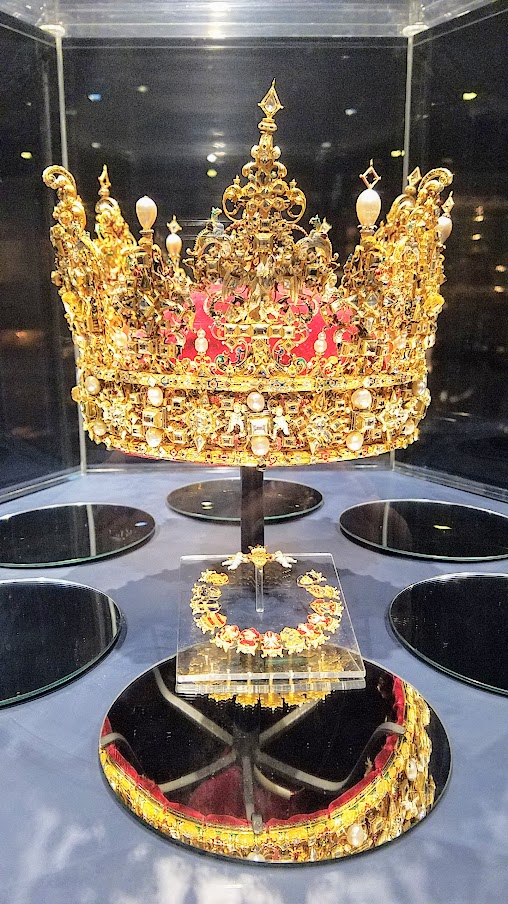

The crown is full of symbolism, such as coats of arms of royal provinces surrounding his head just as the provinces surround his realm, or figures representing the virtues which a good king should possess, and at the same time his functions as a sovereign:
- In front, over the King’s forehead and repeated over his ears is a pelican pecking at its breast in order to feed its young, originally a symbol of Christ’s martyrdom, but here a symbol of the King’s duty to protect and defend his people with his blood.
- Over King’s right hand Fortitudo, the female rider on a lion, a symbol of the King as warlord
- Over his left hand Justitia, the woman with sword and scales, symbolising the King as supreme judge.
- Over the King’s neck Caritas, the mother with a nursing child, a symbol of the King as head of the Church, his love of God and of his people.

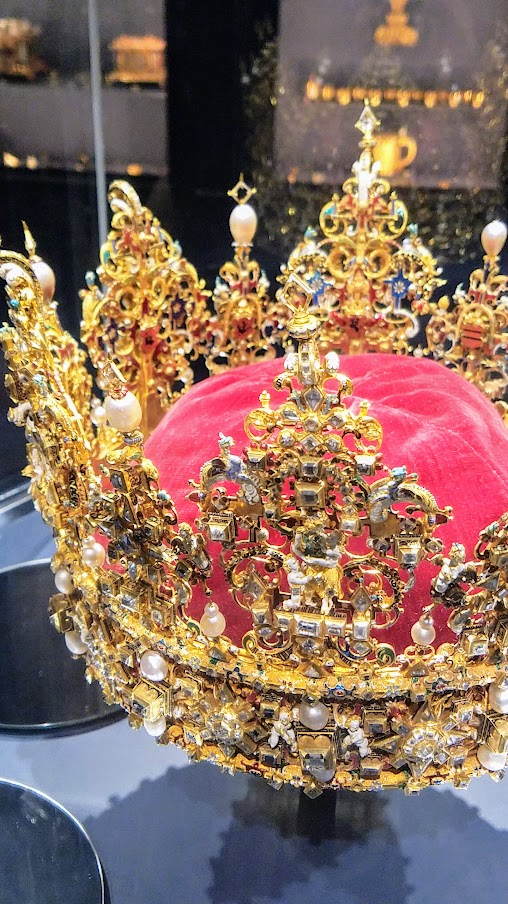
Finally the third room has the Crown Jewels, the Crown Regalia, the Crown of the Absolutist Kings and the Queens’ Crown. This is The Crown of the Absolute Monarchs, or Christian V’s crown (he was the first to use it) and has a total weight 2080 grams (4.6 pounds) and 2 garnets and 2 sapphires. To the right is the Queen’s Crown – these are more practical crowns with less symbolism, just gold and diamonds and such…
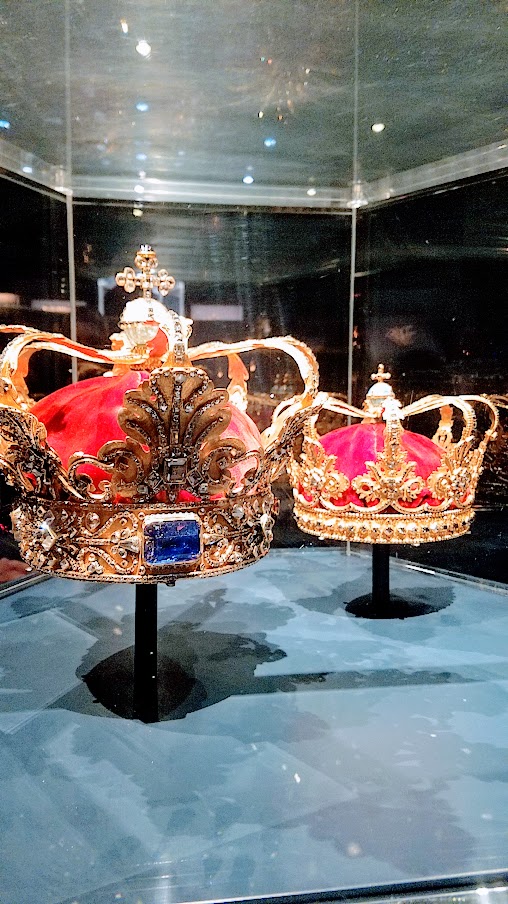
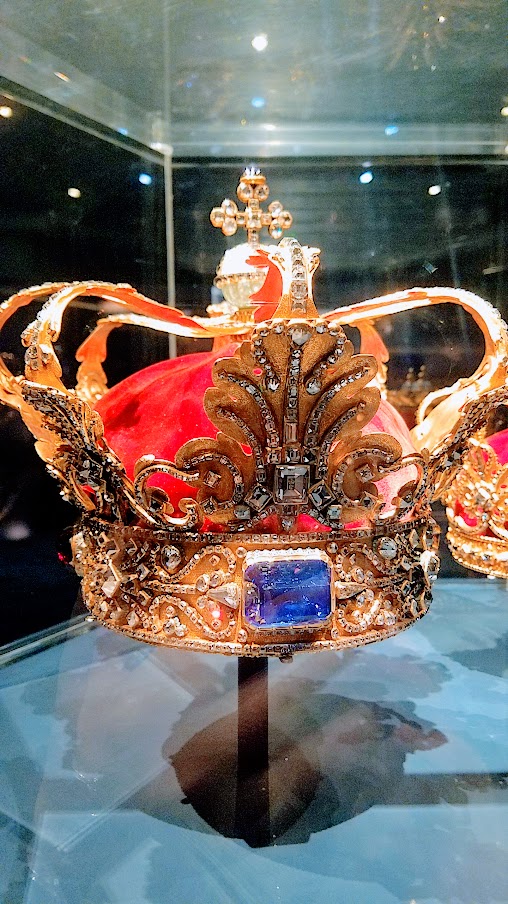
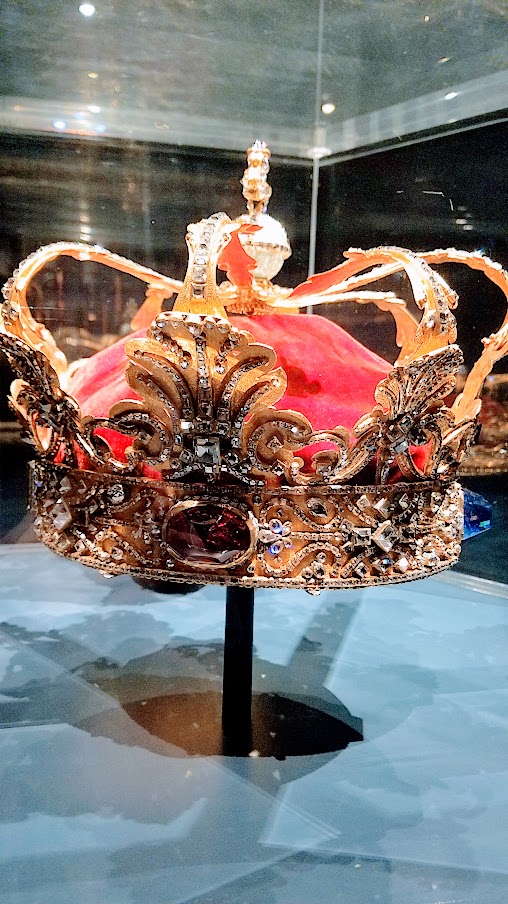

The Crown Regalia includes Sceptre, Orb, Anointing Rapier and Ampulla, all made in gold and jewels. The Anointing Rapier has the emblems of the 19 provinces.

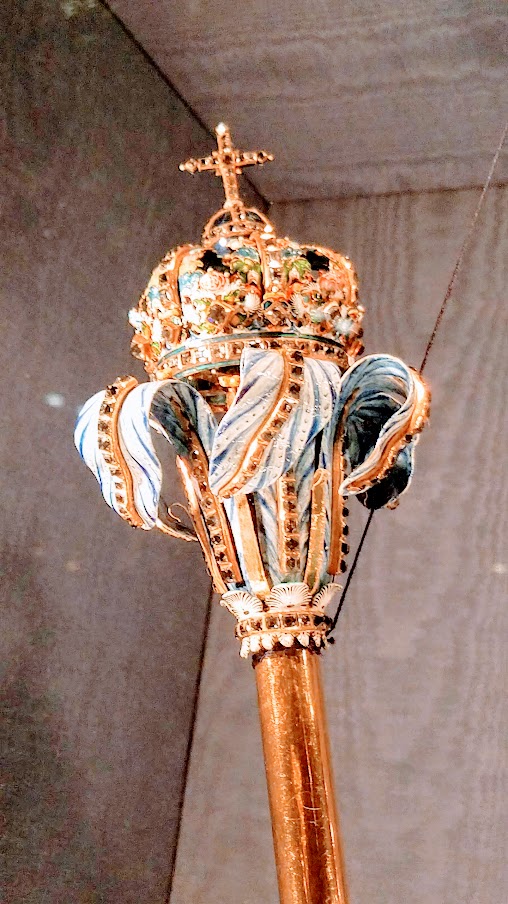
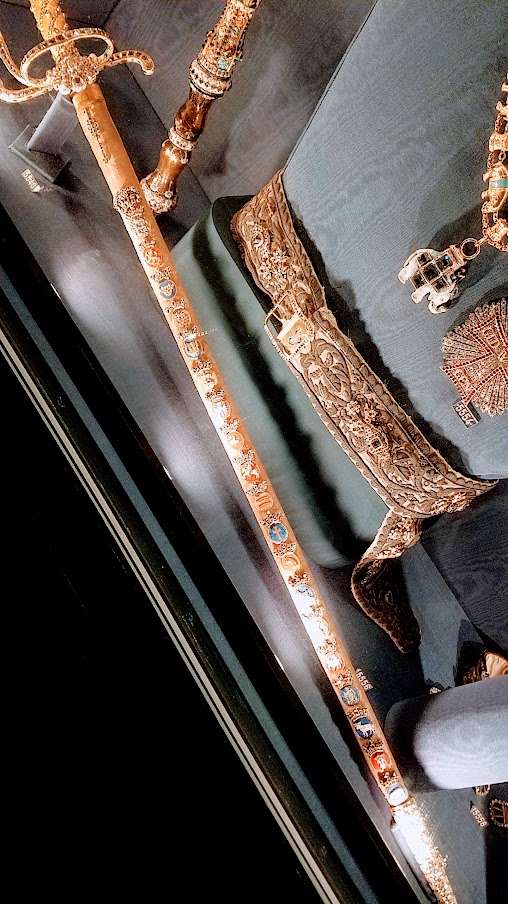
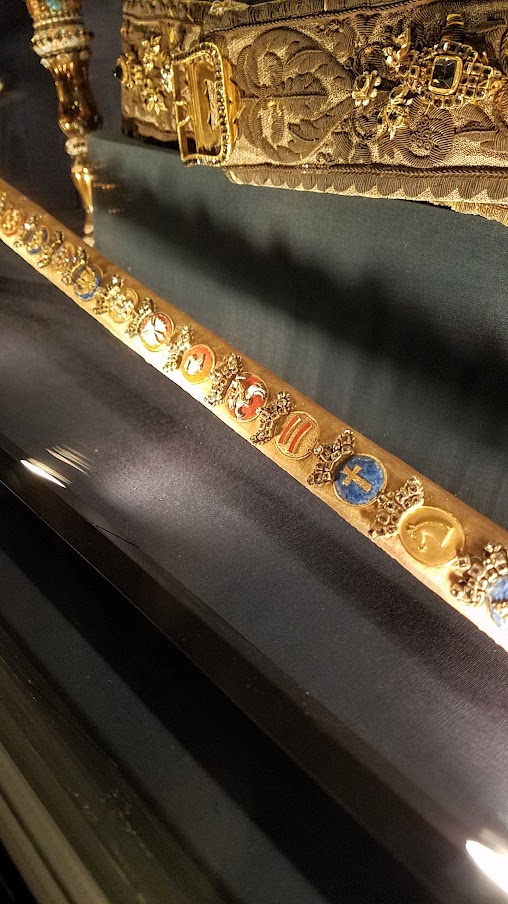
The Crown Jewels primarily consist of four garnitures: a diamond set, a ruby set, a pearl set, and an emerald set – the emeralds being among the world’s finest. The crown jewels are still worn by the queen on special occasions.

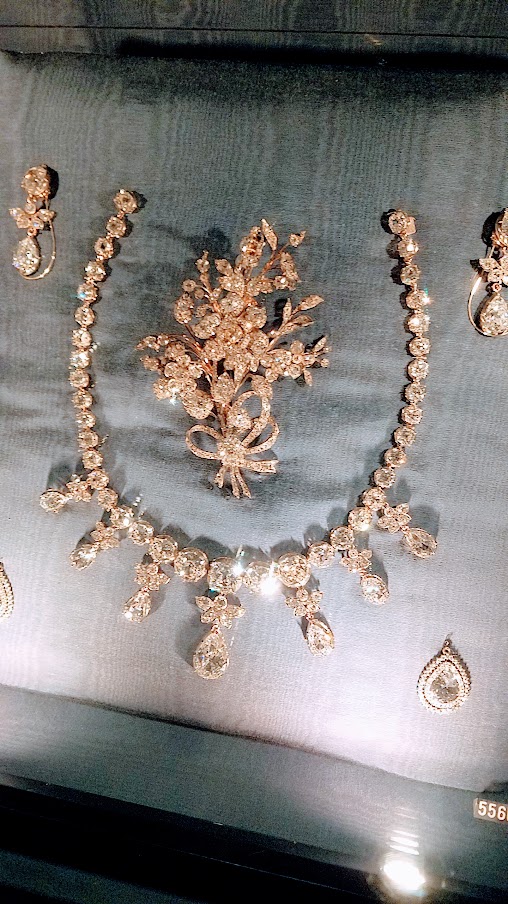
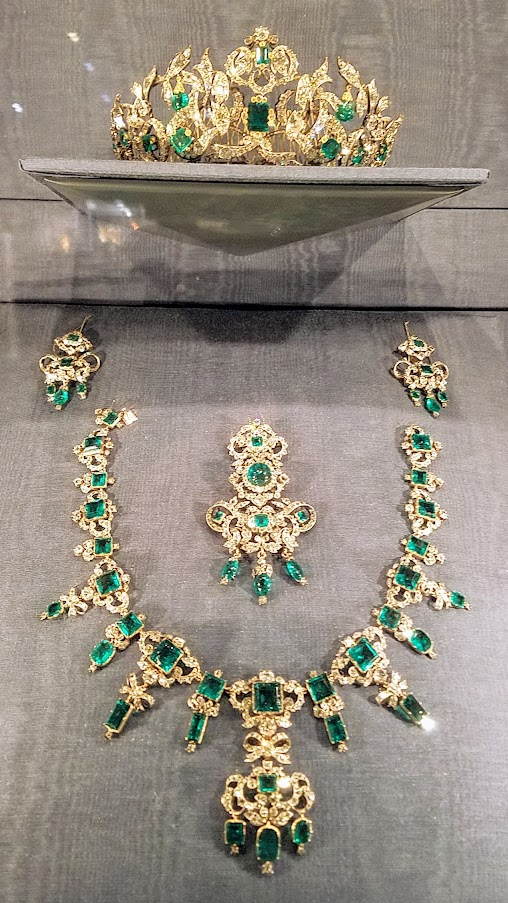
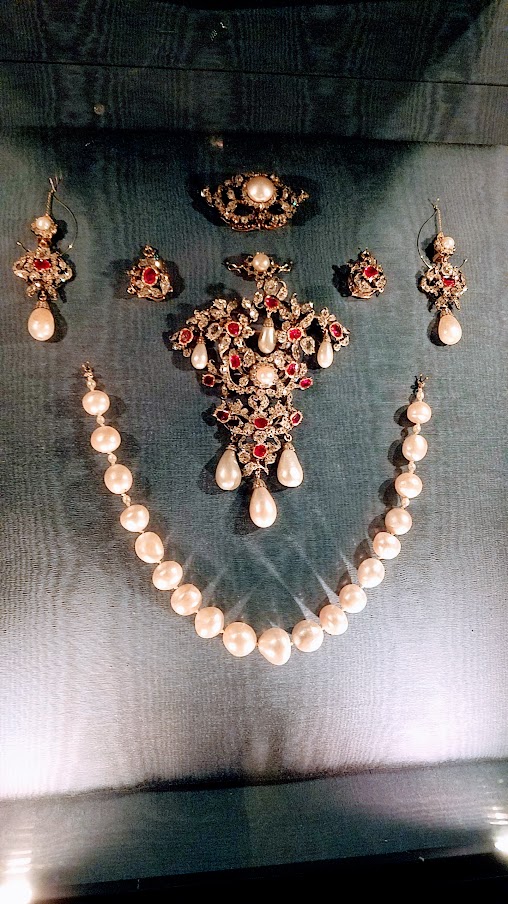
This is just a taste of what you can see at Rosenborg Castle – there was really an overwhelming number of numbered objects in the many rooms of the castle, and ignorant of Danish history and a bit overwhelmed where I didn’t want to read every object, I just picked out ones that caught my eye. Even though I had no background though, I still felt like I got a lot of fun historical trivia and appreciation for previous kings and queens even as I also get annoyed as I usually do that family names are so similar with their roman numerals – only Christian IV really stood out, and similar to in the beginning of some fantasy novels I wish they had a family tree as part of their guide/map.
Which of the various objects that I shared was interesting to you?
More from my adventures in Copenhagen (will be linked once posts are live)
- Restaurant Krebsegaarden
- Lunch at Restaurant Palaegade
- Free things to do in Copenhagen
- Lunch at Geranium
- Ny Carlsberg Glyptotek versus Thorvaldsen’s Museum
- The food market of Reffen
- Visiting Rosenborg Castle
- Visiting Church of our Savior and Tivoli








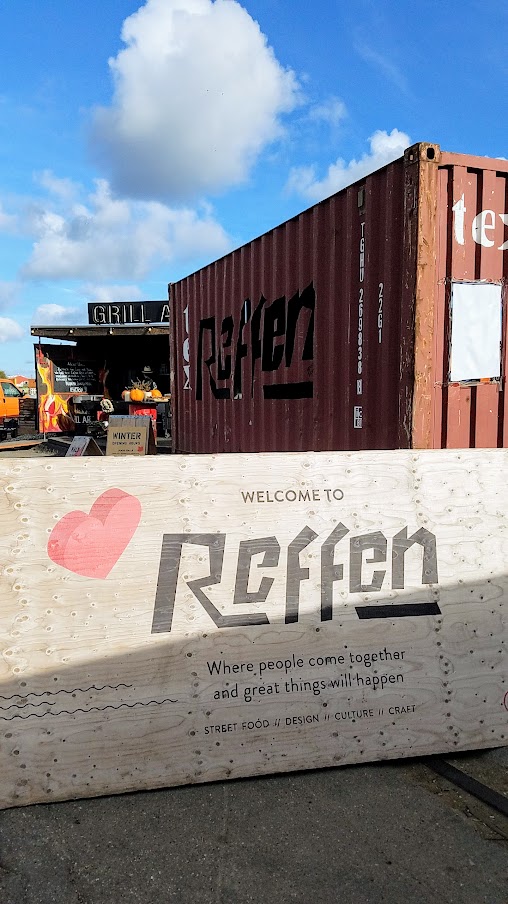



Wow! That place is SUPER ornate and those jewels at Rosenborg Castle are amazing!
Wow, talk about ornate! European castles are something so out of the ordinary for us Americans and such a fun thing to visit. Looks like the self-guided tour showed you so much!
Beautiful! Rosenburg Castle is so ornate, and the jewels are stunning. I studied abroad in Copenhagen a long time ago, and I’ve enjoyed following your adventures on Instagram as I haven’t been back there since then. 🙂
Wow, what a cool experience! And what great photos you captured of it. I totally would have walked by those creepy wax statues too ;).
Looking forward to reading more about your experiences in Copenhagen!
I will take that emerald necklace please 😉 Such an incredible castle!
Wow, that place looks incredible! For someone who doesn’t really love history, I do love places like this that are so full of history!
What a fascinating tour, Pech! You did a great job of taking us along with you, too! Whenever I visit someplace like this, I find myself thinking at least as much about the tradespeople who toiled and the hands that created all of that beauty and opulence as I do about the people who lived in it.